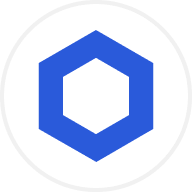RWA Macro On-Chain: Unlocking the Future of Tokenized Real-World Assets
Introduction to RWA Macro On-Chain
Real-World Asset (RWA) tokenization is revolutionizing the financial sector by bridging traditional finance (TradFi) with blockchain technology. This innovative approach digitizes tangible assets such as real estate, bonds, and commodities, unlocking unprecedented opportunities for efficiency, transparency, and accessibility in global markets. In this article, we explore the macro-level trends, technological advancements, and challenges shaping the on-chain RWA ecosystem.
The Market Potential of RWA Tokenization
The RWA market is on a trajectory of exponential growth, with projections estimating its value to reach between $2 trillion and $30 trillion by 2030. This growth is fueled by the increasing adoption of tokenized assets across various sectors, including:
Real Estate: Tokenized property ownership enables fractional investment, lowering barriers to entry for retail investors.
Bonds and Commodities: Tokenization enhances liquidity and settlement efficiency in traditionally illiquid markets.
Money-Market Funds: Tokenized U.S. Treasuries and money-market funds have already surpassed $7 billion in value, driven by high-interest-rate environments and the demand for faster settlement processes.
Institutional Adoption of Tokenized Assets
Institutional players are at the forefront of RWA adoption. Leading financial institutions such as BlackRock, JPMorgan, and Franklin Templeton are incorporating tokenized assets into their portfolios, signaling growing confidence in this emerging asset class. Key benefits driving institutional interest include:
Enhanced Liquidity: Tokenized assets can be traded 24/7 on blockchain networks, unlike traditional markets with limited trading hours.
Operational Efficiency: Smart contracts automate processes like compliance checks and dividend distributions, reducing administrative overhead.
Portfolio Diversification: Tokenized assets provide exposure to new asset classes, enabling better risk management.
The Role of Decentralized Oracles in RWA Infrastructure
Decentralized oracles, such as Chainlink, are critical to the RWA ecosystem, ensuring reliable on-chain data. Their key functionalities include:
Data Accuracy: Oracles aggregate and verify off-chain data, such as asset valuations and interest rates, before feeding it into smart contracts.
Cross-Chain Interoperability: Oracles enable seamless communication between different blockchain networks, fostering a more interconnected tokenized ecosystem.
Compliance Assurance: By integrating regulatory data, oracles help ensure that tokenized assets adhere to legal frameworks.
Stablecoins: The Foundation of Tokenized Finance
Stablecoins are the backbone of the tokenized asset landscape, accounting for approximately $267 billion in value. They serve as both transactional units and yield-generating products within the RWA ecosystem. Key use cases include:
Settlement Layer: Stablecoins facilitate instant, low-cost cross-border transactions.
Yield Opportunities: Investors can earn returns by staking stablecoins in decentralized finance (DeFi) protocols.
Liquidity Provision: Stablecoins act as a bridge between traditional and tokenized financial systems.
Economic Models in RWA Ecosystems
The economic model of Chainlink exemplifies how value is captured within the RWA ecosystem. Its "value capture flywheel" includes:
Staking: Users lock up LINK tokens to secure the network and earn rewards.
Service Fees: Fees are charged for accessing Chainlink’s data feeds and oracle services.
Token Buybacks: Revenue generated is reinvested into the ecosystem, creating sustained demand for LINK tokens.
Regulatory Developments and Compliance Frameworks
Regulatory clarity is essential for the growth of RWA tokenization. Recent developments, such as the passage of the GENIUS Act, are enabling compliant tokenization frameworks. These frameworks address key concerns, including:
Investor Protection: Ensuring tokenized assets meet the same standards as their traditional counterparts.
Transparency: Mandating disclosure of asset details and risk factors.
Legal Certainty: Providing clear guidelines for the issuance and trading of tokenized assets.
Risks and Challenges in RWA Tokenization
Despite its immense potential, RWA tokenization faces several challenges:
Liquidity Mismatches: Rapid on-chain trading of illiquid assets could lead to systemic risks, similar to the 2008 financial crisis.
Regulatory Uncertainty: Inconsistent regulations across jurisdictions may hinder global adoption.
Technological Risks: Smart contract vulnerabilities and oracle failures could compromise the integrity of tokenized assets.
Integration of RWAs into DeFi and Cross-Chain Ecosystems
The integration of RWAs into DeFi is unlocking new opportunities for innovation. Examples include:
Collateralized Lending: Tokenized assets can be used as collateral for DeFi loans, expanding access to credit.
Yield Farming: Investors can earn returns by providing liquidity to RWA-based DeFi protocols.
Cross-Chain Solutions: Interoperability between blockchains enables the seamless transfer of tokenized assets across networks.
Technological Advancements in Tokenization
Advancements in blockchain technology are driving the evolution of RWA tokenization. Key innovations include:
Smart Contracts: Automating complex processes like asset transfers and compliance checks.
Interoperability Protocols: Facilitating communication between different blockchain networks.
First-Party Data Oracles: Providing real-time, accurate data for tokenized assets.
Conclusion
The RWA macro on-chain narrative represents a paradigm shift in asset management, trading, and utilization. With institutional adoption accelerating, regulatory clarity improving, and technological advancements paving the way, the future of tokenized real-world assets is promising. However, stakeholders must address associated risks to ensure sustainable growth and widespread adoption. As the RWA ecosystem evolves, it has the potential to redefine the financial landscape, bridging the gap between traditional finance and the decentralized world.
© 2025 OKX. This article may be reproduced or distributed in its entirety, or excerpts of 100 words or less of this article may be used, provided such use is non-commercial. Any reproduction or distribution of the entire article must also prominently state: “This article is © 2025 OKX and is used with permission.” Permitted excerpts must cite to the name of the article and include attribution, for example “Article Name, [author name if applicable], © 2025 OKX.” Some content may be generated or assisted by artificial intelligence (AI) tools. No derivative works or other uses of this article are permitted.


